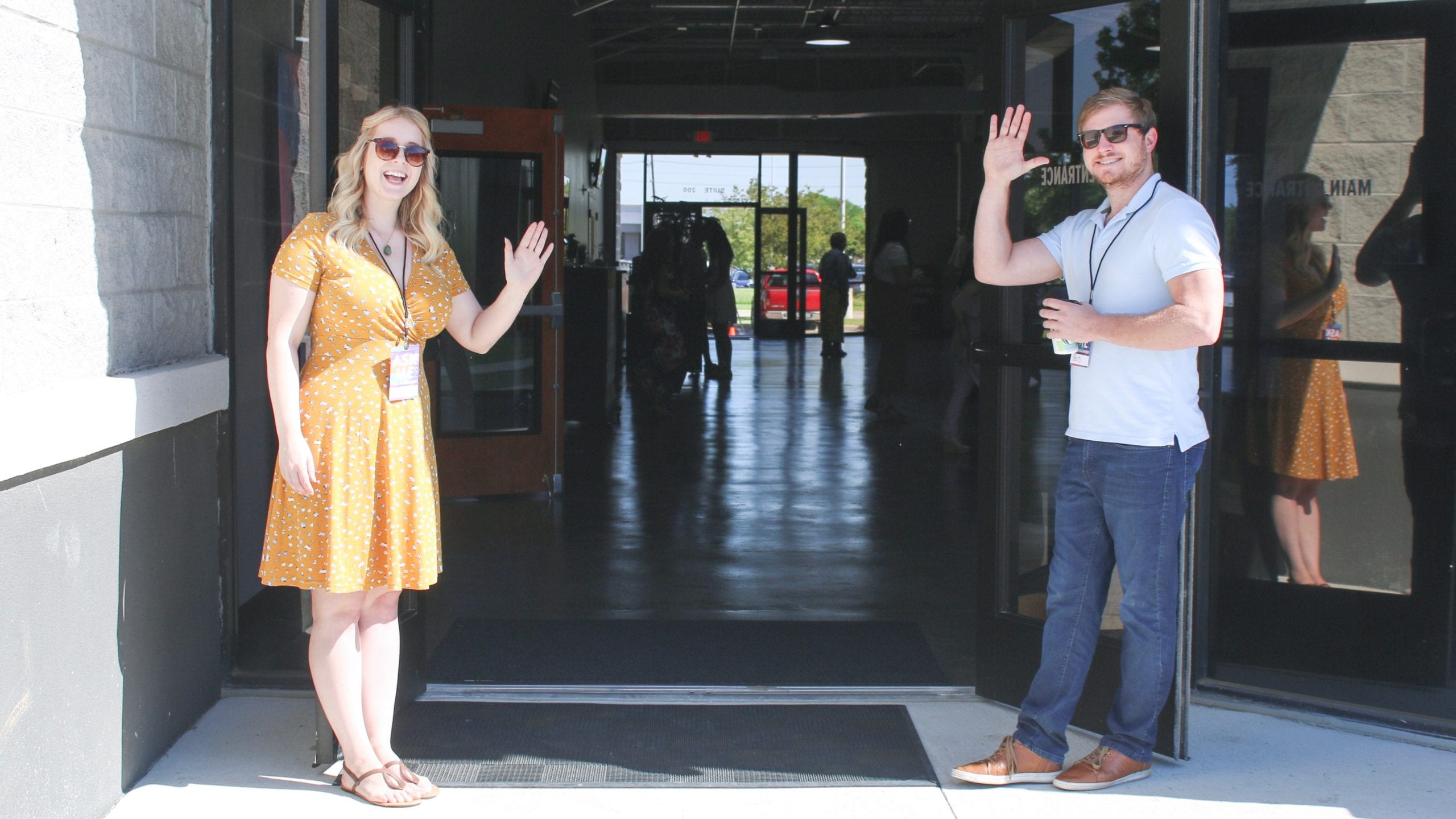Employee Experience Strategies to Craft Your Culture
The working world is waking up to an important truth: Employees aren’t so different to customers.
A fantastic customer experience fuels loyalty and increases engagement, which drives sales and retention, increasing customer lifetime value. All of which builds your brand, making future acquisitions easier too.
In parallel, a fantastic employee experience fuels loyalty and increases employee engagement, which also drives retention and increases productivity. This also circles back to driving sales (as unhappy employees rarely create fantastic customer experiences), and all of this builds your employer brand, making future recruitment easier too.
With new data continuously coming out in support of the remarkable effects of good employee experiences, more and more companies are waking up to the fact that creating positive employee experiences isn’t a gimmick – positive employee experiences drive real, concrete business results, and as such, they’re worthy of investment.
In this article, we’ll cover what a positive employee experience is, why it matters, who owns it, and several actionable strategies you can use today to build your company’s culture and enhance your employee experience.
So, what are you waiting for?
Let’s hop in.

What is employee experience and why does it matter?
We tend to view employee experience as a string of momentary events (like team offsites, events, luncheons, and trainings), but true employee experience encompasses so much more.
In actuality, someone’s employee experience refers to their entire journey with your organization – everything from their first interaction with you as a job seeker to their eventual departure from your company (and beyond).
It includes every aspect of their day-to-day work life, including their work environment, relationships with co-workers and managers, job duties, communication channels, and even opportunities for growth and development.
They’re living it every moment they interact with you, and from this definition, it’s easy to see why employee experience has such a significant impact.
Moment by moment, employee experience directly impacts employee engagement, productivity, and retention. When employees have a positive experience at work, they’re more likely to be engaged and productive, stay with your organization long term, and even be your best advocates in recruitment.
All of this has direct impacts on the bottom line. Sometimes in ways we wouldn’t even expect.
As an example, in a 2019 study from Glassdoor, 56% of employees surveyed said a good workplace culture was more important than salary, and 74% of respondents said they wouldn’t apply to a company unless its values aligned with their own personal values.
So, the benefits of a good company culture are manifold, but who is responsible for creating and sustaining it?
A positive company culture is truly a team effort that involves understanding employees’ needs and expectations, identifying areas for improvement, and generally fostering a sense of community, trust, and belonging among employees.
Here’s what it looks like on a practical level.

Who “owns” the employee experience
The job of creating and sustaining a positive employee experience is often seen as purely an HR task. While HR does play a big role, they can’t do it alone. Many stakeholders are required to establish real, meaningful changes.
In addition to hosting events and supporting more one-time experiences, HR professionals play a critical role in setting the company culture by designing and implementing programs and policies that shape the employee experience. They are responsible for recruiting and selecting top talent, providing training and development opportunities, administering benefits programs, managing performance and compensation, and making sure all of these actions align with the organization’s values and goals.
Organizational leaders (including executives and managers) also help set the tone for the organization and shape the workplace environment through their leadership styles and behaviors. They need to communicate the organization’s vision, values, and goals to employees, and, more importantly, they need to clearly demonstrate these values through their actions.
Frontline managers also heavily influence the culture by coaching and developing employees, providing regular feedback and recognition, ensuring that employees have the resources and support to be successful, and creating a supportive and inclusive work environment while addressing employee concerns and conflicts.
Finally, every employee has a role to play in creating a positive work experience for themselves and their co-workers by being respectful and supportive of their colleagues, communicating effectively, and taking ownership of their work.
Now that we have a scope of who needs to be involved, let’s get into some specific strategies we can use to create these exceptional employee experiences in our own workplaces!

Strategies to enhance employee experience
As we mentioned, creating an exceptional employee experience means more than just scheduling a handful of events throughout the year. To build a positive work culture, we need to take a step back and evaluate all of our processes and how they work together to impact our employees across their entire employee journey.
As you work through each of these strategies, it’s essential that you don’t do it in a silo. Involve key stakeholders from all levels throughout your organization to give their thoughts and opinions.
Remember, including stakeholders helps them feel heard and respected and a diversity of thoughts and opinions will only make our programs better!
Utilize employee journey mapping
Mapping out all of the touchpoints your employees have with your organization is a great way to gain insights into the employee experience and identify where improvements can be made.
Here are just a few ways that employee journey mapping can help you improve your employee experience:
- Identify pain points across the full employee lifecycle. By looking at the entire experience as a whole, you can find the sticking points your employees may experience and take steps to address them.
- Understand employee needs and expectations. Seek to identify what employees value most about their jobs and what they’re looking for in terms of job satisfaction. This can help you develop programs and policies that more closely align with these employee needs and expectations.
- Improve communication. Where is your communication with your employees breaking down? By providing a more holistic view of the entire employee lifecycle, employee journey maps can help you identify common areas where communication tends to break down so they can be addressed (e.g., by providing clearer job descriptions or offering regular feedback or coaching).
- Enhance employee engagement. Similar to identifying where communication tends to break down, you can use employee journey mapping to look for areas in the employee experience where employees would benefit from additional training or learning and development or even find opportunities for employee recognition and rewards.
- Improve employee retention. By identifying areas of friction in your employee experience, you can proactively address them which will help your employees stay with your company longer.
Employee journey mapping adds value by allowing you to step back and view the entire employee lifecycle as a whole, and it’s a powerful tool for gaining insights into the employee experience and identifying opportunities for improvement.

Improve internal communication
Effective internal communication is the cornerstone of a successful organization. When communication channels are open, clear, and transparent, employees feel valued, engaged, and motivated to do their best work.
Poor communication can lead to stress and conflict in the workplace. When employees are unsure about their responsibilities or expectations or where they fit into the organization, they can become anxious or overwhelmed, and misunderstandings and conflicts can arise (this is especially true during periods of organizational change).
On the other hand, clear communication helps employees feel informed and included and even helps build trust between employees and senior leadership, leading to a more positive work environment.
When communication channels are open and transparent, employees are able to understand the goals and priorities of their organization, and they’re better able to align their work with these goals. They also feel heard and feel like their contributions are valued. This sense of connection helps employees feel more invested in their work and motivated to perform at their best.
Good communication also benefits companies beyond the individual contributor level, as, without it, effective teamwork and collaboration aren’t possible. Employees who feel comfortable sharing ideas and feedback perform better in teams and can more easily contribute to a more collaborative and innovative work environment.
To create a culture of communication, encourage leaders to be transparent and open, and create channels where feedback and collaboration are welcome. It may also benefit your organization to offer training around effective communication, as it’s very much a learned skill and doesn’t come naturally to everyone.

Create an amazing onboarding experience
The effects of your onboarding experience don’t end when your employee is onboarded – a positive (or negative) onboarding experience will set the tone for a new employee’s entire tenure with your company.
Within the first 6 months, 86% of new hires have already decided how long they will stay with a company … and 10-25% of them leave.
Why are these effects so drastic?
A poor onboarding experience causes stress and anxiety. When your employee is lacking a clear understanding of their role and responsibilities or feels like they don’t have the information and support they need to succeed, their daily work becomes intimidating. They don’t feel comfortable expressing themselves or doing their best work because they constantly feel like they’re scrambling to catch up. Your employee retention suffers.
More than just reducing stress, an effective onboarding program helps employees feel confident and prepared by not only helping them understand their role, but also giving them insight into the critical things they’ll need to be successful, like your company’s organizational structure and culture.
Finally, as 94% of employees agreed that they’re more productive when they feel connected to their colleagues, it’s essential to use onboarding as an opportunity to help new employees build relationships and networks within your organization so they can feel more welcome, valued, and engaged. When employees feel like they’re part of the team from day one, they’re more likely to feel invested in their work and motivated to perform at their best.
If your organization has a clear, cohesive, and effective onboarding experience, you’ll set your employees up for success, and your organization will enjoy the benefits long after their first few months on the job.
Fine tune employee training
It’s virtually impossible for employees to have a positive experience if they don’t have the necessary tools and resources to do their jobs.
By providing your employees with the learning and development opportunities they need to develop new skills and grow in their roles, you’ll help them feel more engaged and invested in their work.
It only makes sense that effective L&D programs lead to improved productivity and performance. By equipping employees with the skills and knowledge they need to do their jobs, they can do them more effectively. Similarly, on-the-job training can help employees learn new techniques and best practices that can help improve performance outcomes.
All of this training also helps improve employee morale and job satisfaction as employees feel more valued and appreciated when they’re growing and developing in their roles.
Access to training and L&D helps demonstrate your long-term commitment to your employees in a way that few other things do, and employees tend to notice, which is why companies who implement training and L&D programs typically see higher retention rates.
Just like the other items on this list, training goes far beyond the individual. Offering training and development opportunities can help foster a culture of continuous improvement where employees are encouraged to seek out new ideas and approaches to their work.

Invest in an employee health program
When we say that employee experience touches every interaction an employee has with your company, we mean *every* interaction – including how they feel when they’re in the office.
Employees who are happy, engaged, and healthy are more likely to be productive and committed to work, and one effective way to usher in these positive feelings and attitudes is with an employee health program.
Similar to offering access to L&D and training, employee health programs show your employees that you don’t just care about the function they provide your company, but you also care about their physical and mental well-being as well. It signals that you’re making an investment in them, and your employees will respond with reciprocal investment in their jobs.
When employees have access to resources such as wellness programs, gym memberships, and health coaching, they’re more likely to adopt healthy habits that can lead to long-term benefits (for example, participating in a fitness program can help employees reduce stress, improve their physical health, and increase their energy levels, all of which can contribute to their overall well-being).
And when employees feel healthy and energized, they’re more likely to perform at their best and be more engaged in their work.
Employee health programs are a fun “not-directly-work-related” way to encourage your employees to get healthy, form new cross-company relationships, and deepen their connection to your company.
Everybody wins!
Ask for, learn from, and act on employee feedback
Asking for and acting on employee feedback is one simple way to help your employees feel engaged while making meaningful improvements to your company and your employee experience at the same time.
As we mentioned above, the exercise of building employee journey maps is powerful because it allows you to view your entire employee lifecycle from a new perspective, but you’ll still have blindspots. Collecting employee feedback allows you to see this same experience from an entirely different perspective – through the eyes of each of your employees.
The simple act of asking for employee feedback demonstrates to your employees that you value their thoughts and opinions and that you’re committed to continuous improvement, but you can’t stop there!
If you don’t follow through on responding to, investigating, and acting on the feedback they’ve provided, employees will start to sense that your request isn’t genuine, so you need to be sure you’re taking this feedback seriously.
As your organization acts on your employees’ feedback, you’ll demonstrate your commitment to improving their employee experience. Employees willl be more likely to feel valued and invested in the organization’s success and this will be evident in your increasing retention rates.
Tip: If you want to take this to the next level, allow your employees to lead or participate in the task forces assigned to implement the suggestions they’ve brought up, so they can participate firsthand in making their workplace better for themselves and their co-workers.
Your employees want to enjoy their jobs and their time at work, so if they care enough to stand up and offer suggestions for improvements, cherish it and take them up on their offer! Your workplace will only benefit from it.

Focus on company culture
From clocking in, to having one-on-ones, to receiving an email from HR, every single thing your employee does at work is an interface with your company culture.
Whether it’s good or bad, your company culture will seep through every element of your business, and your employees can sense it in every little interaction. This is why building a strong company culture is critical for a positive employee experience.
Building a strong company culture where employees feel comfortable expressing their opinions and ideas helps create a sense of community and belonging among employees, and it can also lead to increased collaboration, innovation, and productivity. A company culture that helps promote well-being and work-life balance fosters a more positive and engaged workforce by demonstrating to your employees that you value their physical and emotional health, not just the hours that they put in.
Your company culture is present in every interaction, even when you can’t be, so building a culture that promotes accountability and ethical behavior can also prevent misconduct and create a sense of trust and transparency among employees. (Tip: Employee one-on-ones and performance reviews are an excellent opportunity to reinforce your company culture with each employee!)
While it takes effort to build, your effort will pay off in more ways than you may expect. For example, a strong company culture transcends your company’s walls and can be one of your best recruitment tools. As your reputation spreads, it can help you attract and retain top talent by actively drawing in more talented and motivated employees with similar views and perspectives.
To create a positive company culture, encourage community and belonging, prioritize employee-wellbeing, and promote accountability and ethical behavior. By creating a positive workplace culture, you’ll create an environment where your employees feel engaged, invested, and committed to the success of your organization.
Share customer feedback with your employees
Too often, our employees can fall into the routine of clocking in, staring at their screens, and then clocking out without giving thought to the real-life impact that their work has on others.
Sharing customer feedback with your employees is one simple way to break that cycle and help your people foster a sense of purpose and pride in their workmanship. When employees understand how their work impacts actual customers in the real world, they’re more likely to feel invested in their work and take pride in the organization’s mission, which can lead to increased motivation and job satisfaction (which, in turn, leads to better customer experiences). It’s a beautiful cycle.
Bringing your customer into the conversation helps your employees see past themselves and any minor inter-departmental squabbles, as it keeps your employees focused on the greater mission of your company.
Even hearing negative customer feedback can be a positive experience for your employees, as it gives them the opportunity to collaborate and discuss improvements, promoting a culture of continuous improvement and innovation within your company.
To facilitate the sharing of customer feedback with your employees, make sure it’s easily accessible (via an employee portal, dashboard, or another method), host regular feedback-review meetings, and/or put on workshops where employees can assess useful feedback and come up with creative solutions to help improve the customer experience.
Addressing customer feedback helps improve your company culture and your product or service while making your employees feel more empowered by giving them the opportunity to make a larger impact.

Promote diversity and inclusion
How can we expect our employees to bring their best selves to work and enjoy what they do if they don’t feel welcome?
Promoting diversity and inclusion creates a more welcoming and inclusive work environment. When our employees don’t fear discrimination or bias, they’re more likely to feel valued, respected, and free to be themselves.
Creating an environment where all are welcome helps draw top talent to your organization, and having a culture that encourages diversity also encourages higher levels of creativity and innovation. Employees who come from diverse backgrounds typically have different perspectives and ideas and are more likely to come up with unique and innovative solutions to complex problems, which can also help your company stay more competitive in your market.
To create a culture that encourages diversity and inclusion, consider creating a clear diversity and inclusion policy that outlines your organization’s commitment to diversity and inclusion, hosting trainings that educate employees on the importance of D&I, and building initiatives that promote diversity in the workplace like employee resource groups (ERGs), diversity and inclusion committees, and mentorship programs.
These initiatives can help employees feel supported and valued, ultimately leading to a more positive and inclusive workplace culture.
Offer growth opportunities
One of the best ways to improve your employee experience and increase your retention rates is inviting your employees to help build their future with you.
Providing opportunities for professional development helps employees learn new skills, increase their knowledge, and gain new experiences. And when employees notice that you’re investing in them and feel that they have the opportunity to learn and grow in their jobs, they’re more likely to feel loyal and committed to your company and stay engaged and motivated to perform their best work.
As a function of enhancing your employee experience, offering growth opportunities is directly linked to increasing employee retention, as, when employees feel that they have the opportunity to develop their skills and advance in their careers, they’re less likely to feel like they’re stuck in a dead-end role or that they’ll outgrow their role and they’re more likely to stick around. This means you’ll retain your top talent and reduce your turnover rates, which can be costly and disruptive to your business.
Don’t worry! If you want to build out your employee growth programs, you don’t have to do everything in-house. Providing access to external training opportunities such as workshops and conferences is just as effective.
You can also work with employees and managers to create employee career development plans with applicable goals, development opportunities, and timelines, and/or provide opportunities for cross-functional or job rotation experiences, which can also help your people form deeper cross-organizational relationships.

Provide manager training
As we mentioned, managers play a critical role in the employee experience.
From creating a positive work environment to motivating employees and driving business success, when managers are equipped with the necessary skills and knowledge to lead effectively, they can help create a culture that promotes employee engagement, satisfaction, and retention.
For example, we shouldn’t assume that all of our managers were born with expert communication skills. By providing training on topics like communication and conflict resolution, we help our managers create a more open and supportive work environment that fosters employee engagement and job satisfaction. And when employees feel supported and valued by their managers, they’re more likely to be satisfied with their jobs and more likely to stay with the organization.
So often our managers are promoted up from their departments or specialties, so there’s an entirely new skillset they need to learn to be effective in their new roles. By providing them with these training opportunities, we don’t only help our managers, but we also improve the employee experience for their direct reports and our company as a whole.
To best equip our managers with the most effective trainings, we should first identify the key skills and knowledge areas our managers need to be effective leaders (via surveys, focus groups, or one-on-one meetings) and then create the programs that address these areas.
As training is a continuous process, be sure to supplement your manager training programs with relevant coaching and support and continuously monitor the effectiveness of your training program with employee feedback, performance metrics, or surveys.
Enhancing employee experience with solutions from Enboarder
A great employee experience and company culture is not something that happens by accident – it’s something that needs to be carefully and intentionally crafted and constructed and preserved in a way that’s easily accessible to key stakeholders and consistent for employees across your organization.
It’s not something that can be implemented in a static process document or in quarterly meetings, it needs to be active in your day-to-day process and procedures.
That’s why you need Enboarder’s Human Connection Platform.
With Enboarder, you can set up no-code best-practice workflows that trigger nudges and key communications at the right times to help you implement all of the abovementioned strategies while ensuring that no employee is left unsupported or feels left out.
And, since you can upload pre-built templates, Enboarder allows your managers to easily keep up with their employees without having to worry about writing new communications every time or fumbling with dozens of log-ins.
This means less workload on your managers and more consistency and better communication for your employees.